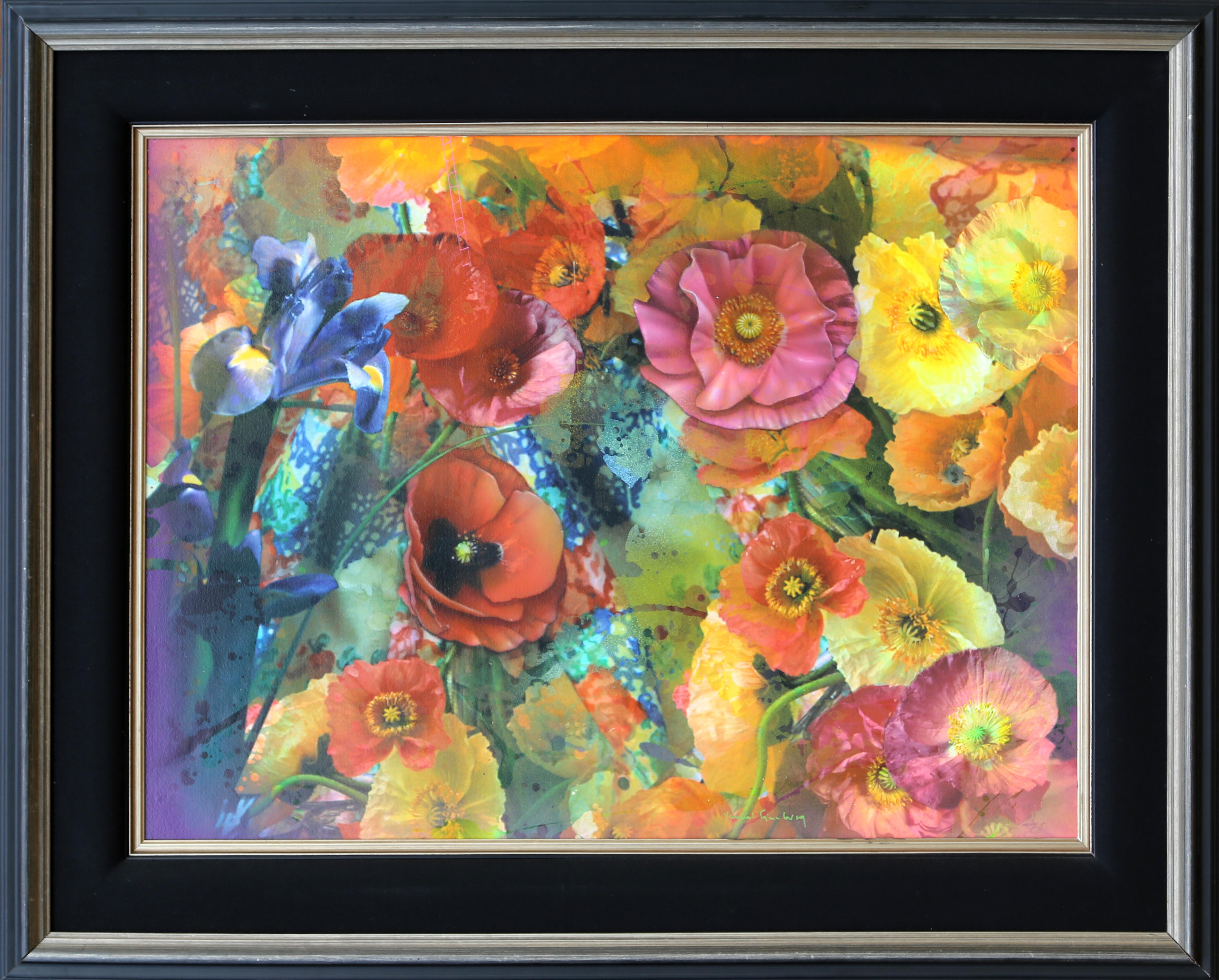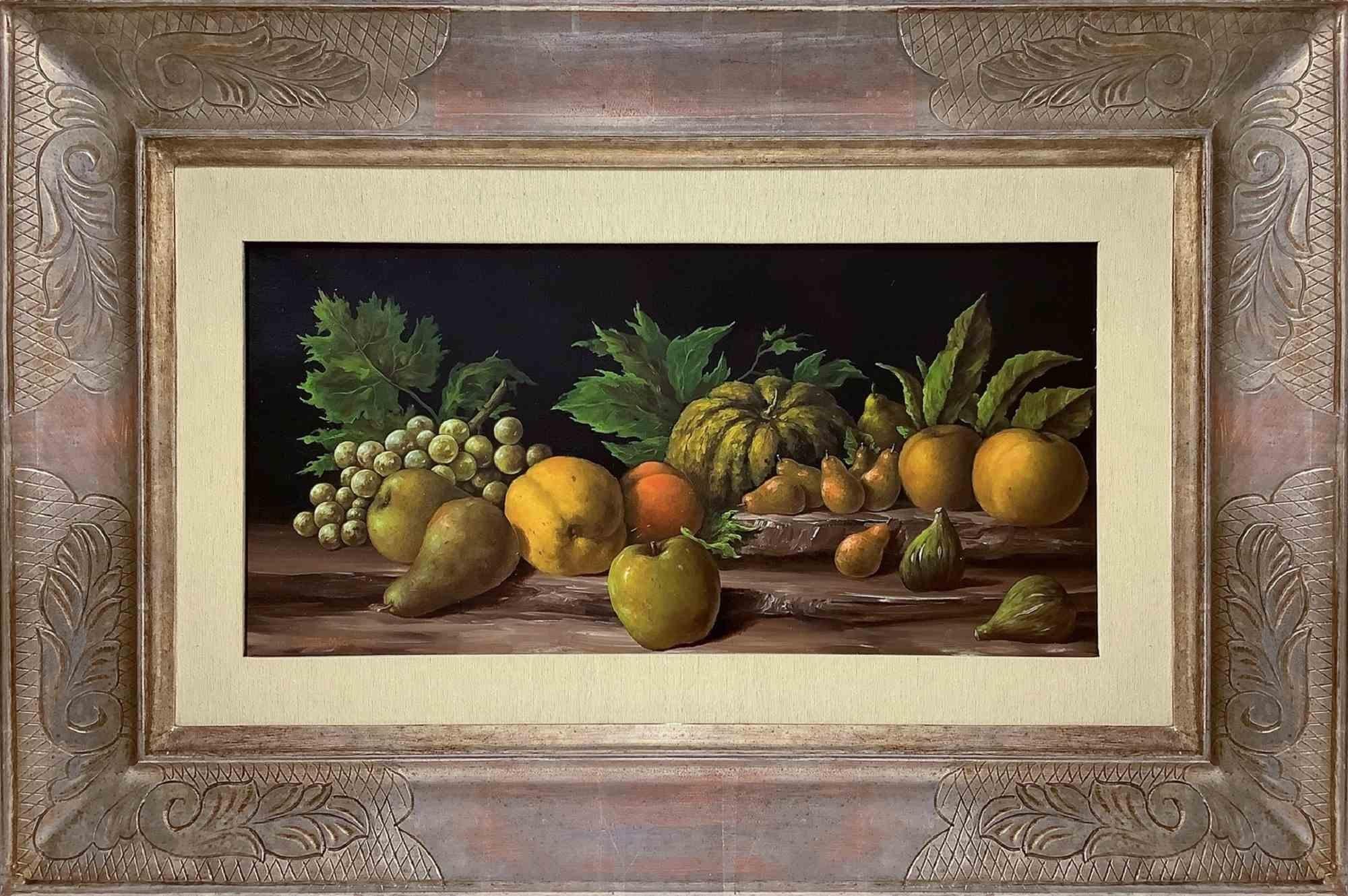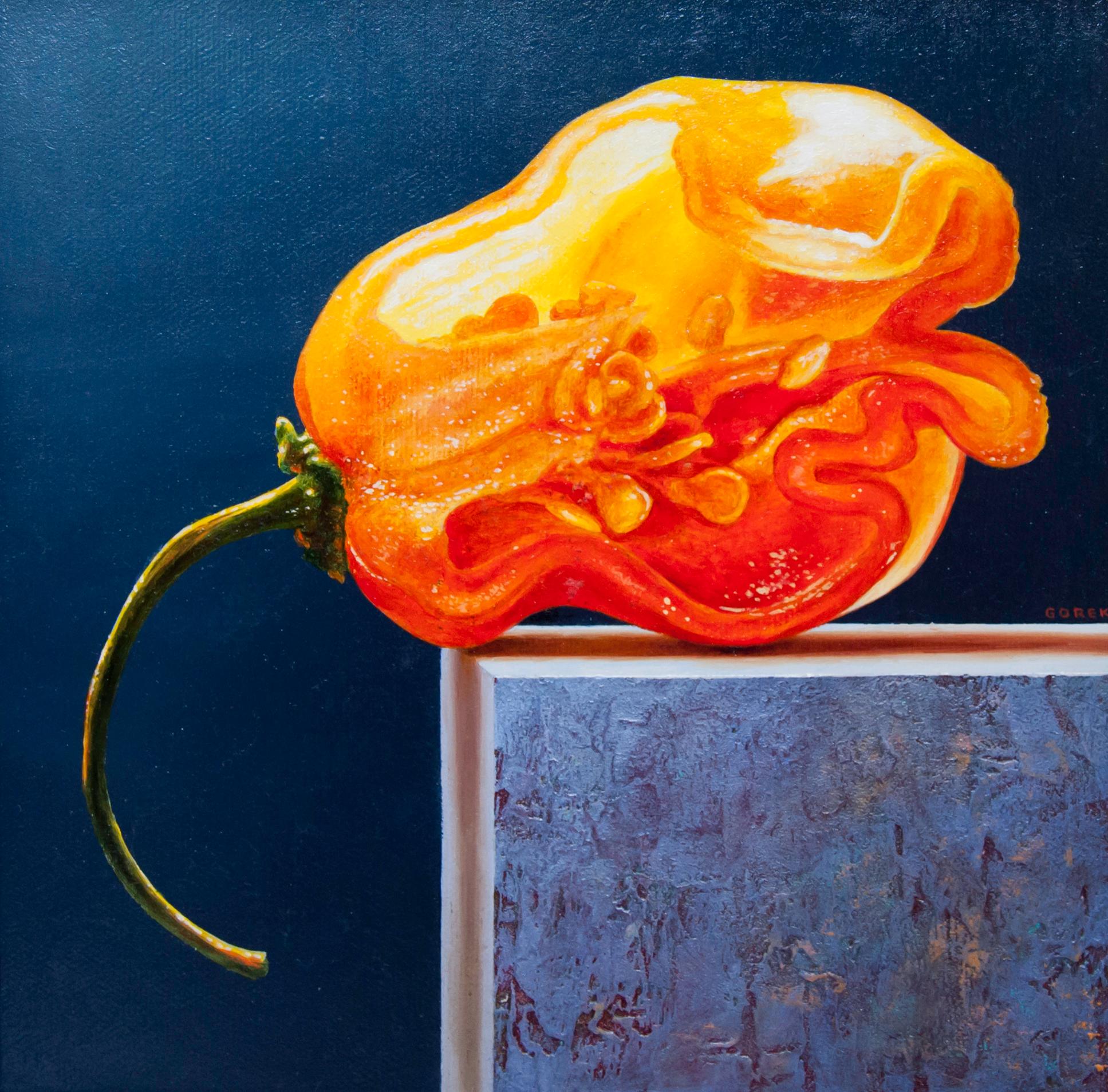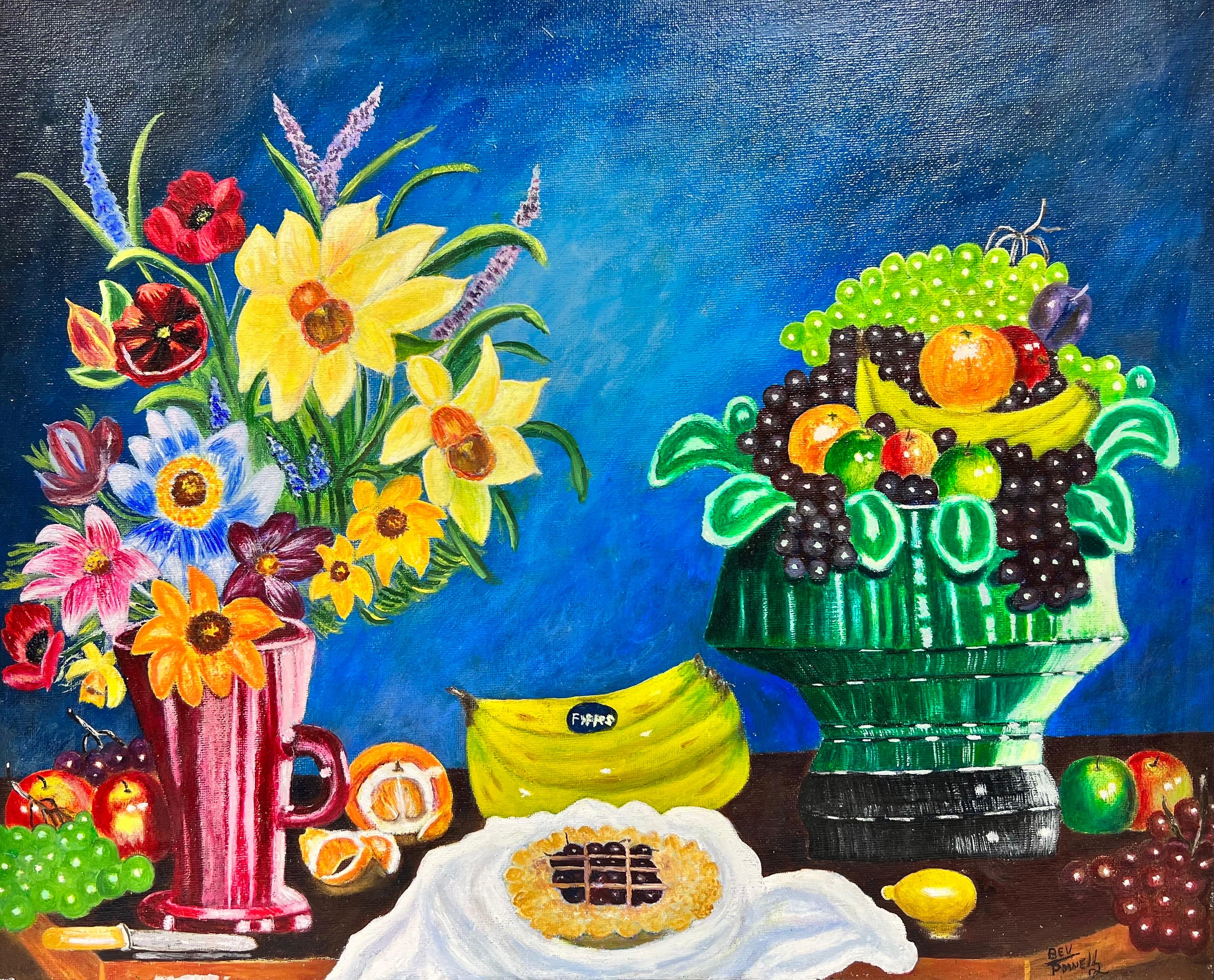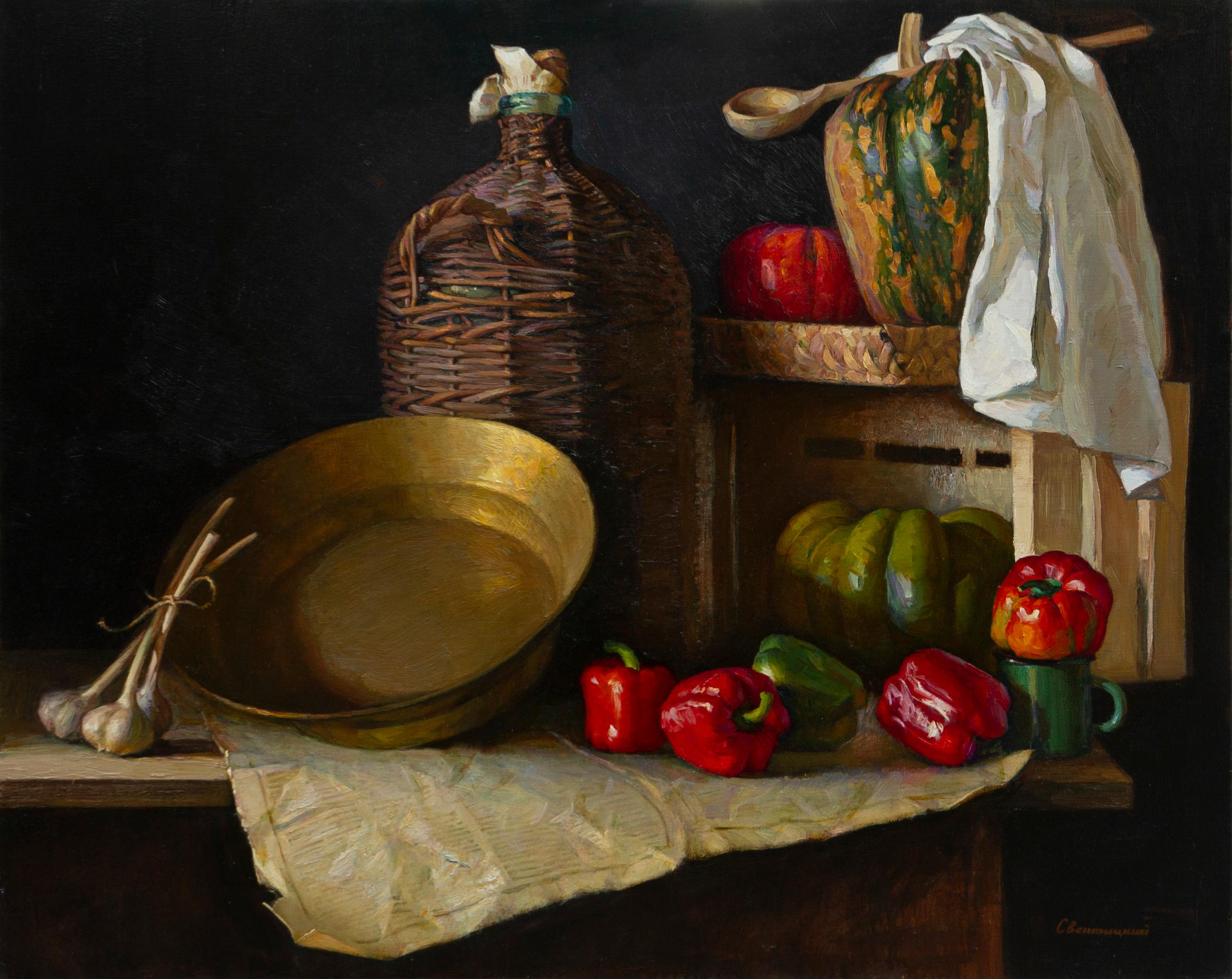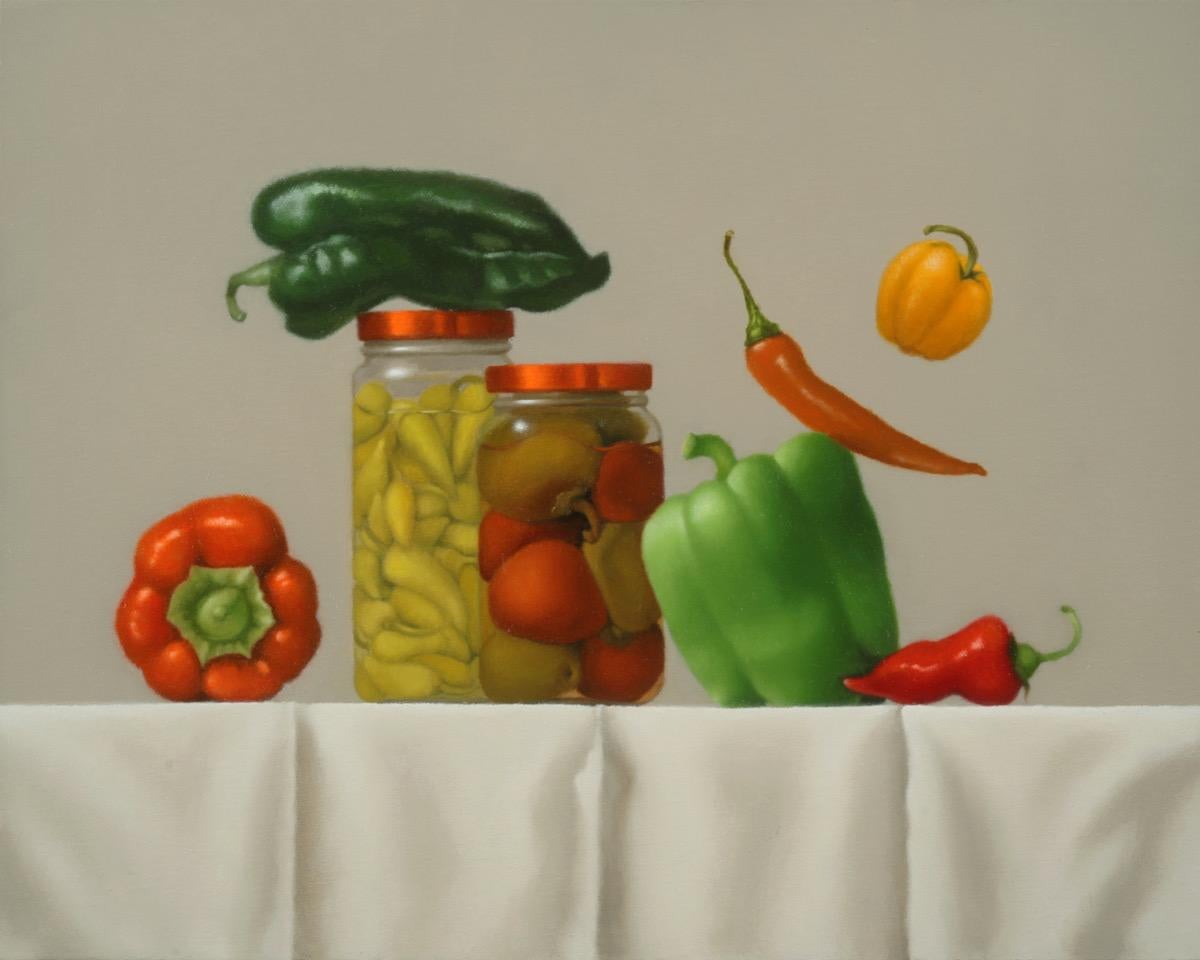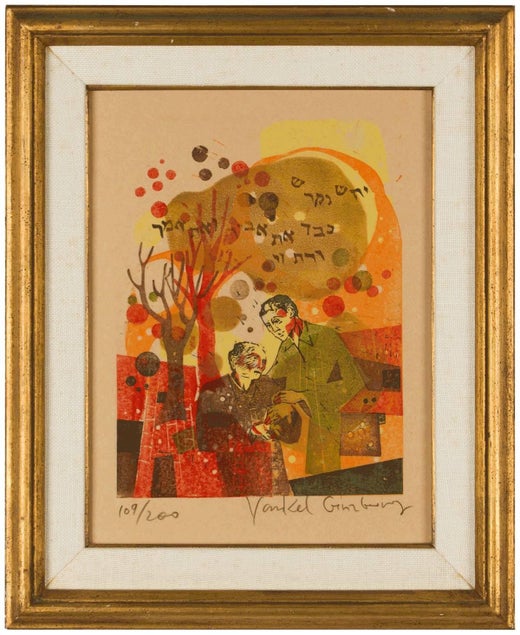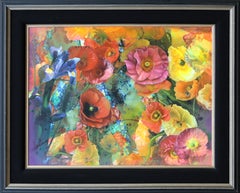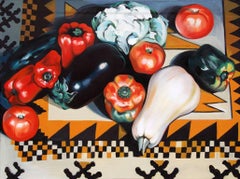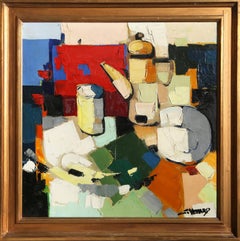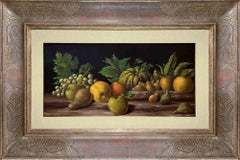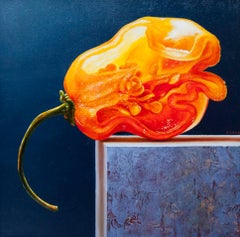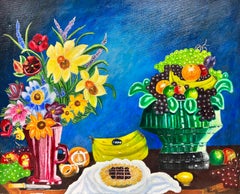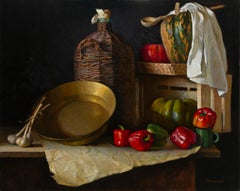Yankel GinzburgStill Life with Spices, Large Colorful Painting by Yankel Ginzburg2003
2003
About the Item
- Creator:Yankel Ginzburg (1945, Kazakhstani)
- Creation Year:2003
- Dimensions:Height: 41 in (104.14 cm)Width: 51.5 in (130.81 cm)
- Medium:
- Movement & Style:
- Period:
- Condition:
- Gallery Location:Long Island City, NY
- Reference Number:1stDibs: LU46610605602
Yankel Ginzburg
Yankel Ginzburg was born Yuri Zhukov in 1945 in Alma-Ata, capital of the Kazakhstan Republic near the Chinese border. Ginzburg is a painter, sculptor, printmaker and statesman. Jewish on his mother’s side, Yankel and his family emigrated to Israel, where Ginzburg became the youngest student, to be admitted to the prestigious Institute of Art, from which he graduated with honors in 1965. He has won numerous awards and honors including the Whitney Museum of American Art - Unveiling of sculpture collection in Gondolas and One-man exhibition in Art Academy Moscow, among others.
- ShippingRetrieving quote...Shipping from: Long Island City, NY
- Return Policy
More From This Seller
View AllEarly 2000s Contemporary Still-life Paintings
Acrylic
1970s Photorealist Still-life Paintings
Canvas, Oil
1970s Modern Still-life Paintings
Oil
1970s Contemporary Portrait Paintings
Canvas, Oil
1990s Contemporary Interior Drawings and Watercolors
Pastel
1980s Modern Still-life Paintings
Canvas, Oil
You May Also Like
1990s Contemporary Still-life Paintings
Canvas, Oil
2010s Academic Still-life Paintings
Oil, Canvas
21st Century and Contemporary Modern Interior Paintings
Oil
2010s Realist Still-life Paintings
Oil
21st Century and Contemporary American Realist Still-life Paintings
Canvas, Oil
2010s Impressionist Still-life Paintings
Canvas, Oil
Read More
Romare Bearden’s Humanity Infuses His Bright, Bold Art
Through collage, painting and printmaking, the artist foregrounded Black life in America in revolutionary new ways.
Chryssa’s 1962 Neon Sculpture Was Way ahead of the Art-World Curve
By working with lettering, neon and Pop imagery, Chryssa pioneered several postmodern themes at a time when most male artists detested commercial mediums.
